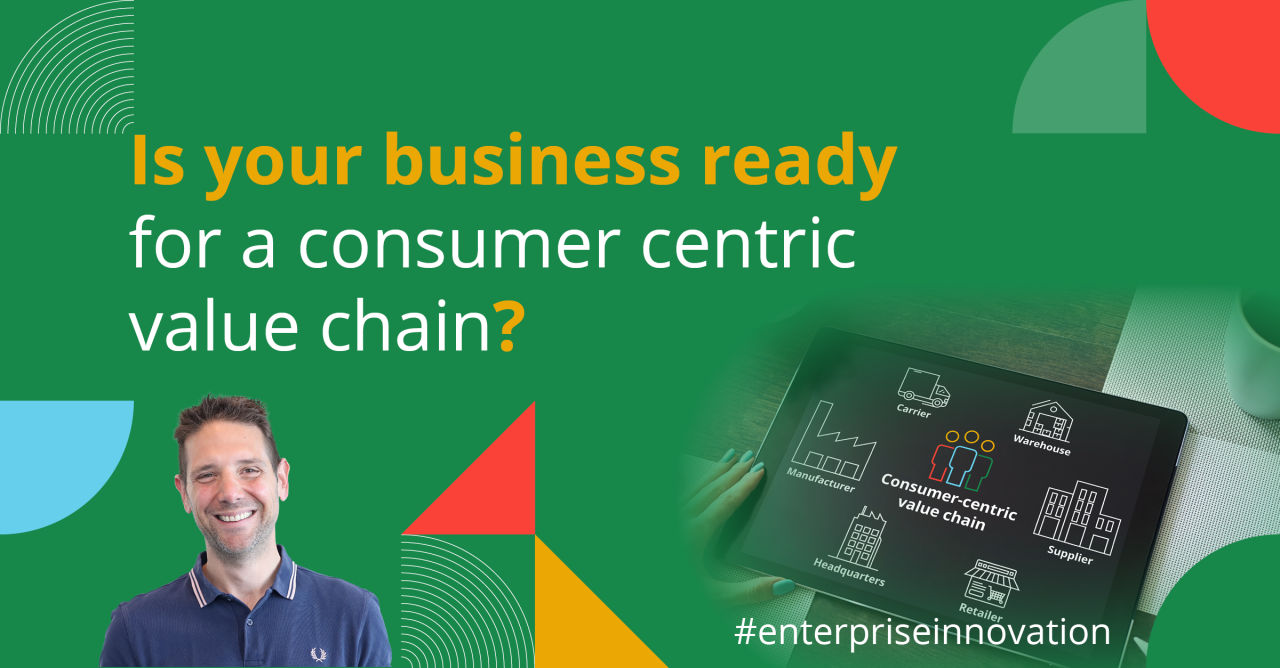How to keep up with your consumer-centric value chain

In recent years, the demands of modern consumers have shifted dramatically. It calls for a different approach in creating value. Value chains have become more consumer-centric than ever, disrupting the way consumer packaged goods companies operate. Is the organization of your value chain ready to meet the needs of the modern consumer?
The disruption of value chain organization is due to changing customer expectations: control over delivery windows, product and service personalization, and flexible payment options are the priorities now. If you don’t want to lose your customers, you need to adjust to these demands and reorient your value chain to a consumer-centric one. For consumer-packaged goods (CPG) companies, this challenge is even more complex because they rely so heavily on external suppliers and third parties when it comes to their upstream and downstream value chain.
Consumer-centric?
So what exactly does a consumer-centric value chain mean? First, it means delivering products and services in a customized way that meets the specific needs of the consumer. And it means doing this in an agile way, with the flexibility to change and keep up with continually shifting consumer demands. Consumers are also looking for trustworthiness more than ever: transparency around products and processes, traceability of sources, and ethical behavior across the value chain. Finally, they want the new products and services you offer them to spark delight. With the interconnected reality of online retail and contact-free delivery becoming ever more the norm, the way your value chain is organized may need some rethinking.
Situational awareness
In order to know whether your value chain is consumer-centric, and thus future proof, you need to ask yourself a few questions as a COO, CMO, value chain manager, or data manager. Is your value chain meeting the increased consumer expectations, i.e. creating value, or is it underperforming? In the latter case, we speak of value erosion: are you losing value as a result of your actions – those that you can control – or from other parties to whom you rely for the servicing of your customers?
Keeping track of the right data is key in knowing whether you’re living up to this fundamental question or not. These data give you insights in meeting the business-as-usual need to profitably create great products, but also provide for the consumer demands of greater transparency of production, control over delivery, and tailored financial options.
As of today, most of CPG companies hold too little of this vital data, making it significantly harder for them to monitor, control, and affect their value chain. They sometimes don’t even know where their products are or how much stock they’re holding. This lack of visibility leads to inflexible, slow value chains that can’t adapt to the increasing demands of the consumer. And at the end of the day, lack of data leads to value erosion.
The right ecosystem
Achieving customer-centricity requires the right partner ecosystem to assess your business – including production, stock, and critical paths – and then set up a value chain optimization program. Portera can help you build this foundation and transform your organization so that every member of your team becomes data literate, so you know what to monitor, and can take the requisite actions to reach the level of data-driven commercial excellence your company is aiming for.
